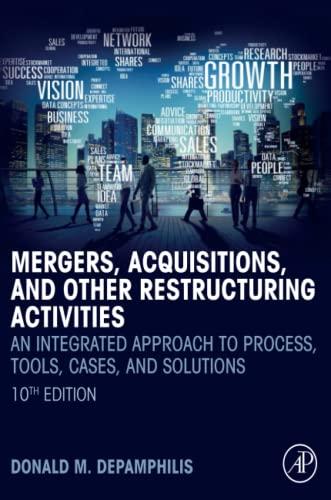Mark Kwan and Todd Jovanovich have been discussing the future of Kiwi Yachts. The company has been experiencing fast growth, and the two see only clear skies in the company's future. However, the fast growth can no longer be funded by internal sources, so Mark and Todd have decided the time is right to take the company public. To this end, they have entered into discussions with the investment bank of Crowe & Mallard. The company has a working relationship with Renata Harper, the underwriter who assisted with the company's previous bond offering. Crowe & Mallard have assisted numerous small companies in the IPO process, so Mark and Todd feel confident with this choice. Renata begins by telling Mark and Todd about the process. Although Crowe & Mallard charged an underwriter fee of 4% on the bond offering, the underwriter fee is 7% on all initial share offerings of the size of Kiwi Yachts' offering. Renata tells Mark and Todd that the company can expect to pay about $1 800 000 in legal fees and expenses, $13 500 in ASIC registration fees and $15 000 in other filing fees. Additionally, to be listed on the ASX, the company must pay $125 000. There are also transfer agent's fees of $6500 and engraving expenses of $450 000. The company should also expect to pay $75 000 for other expenses associated with the IPO. Tadel that to file with ASIC tha caminanummet nrovide thron voare Finally, Renata tells Mark and Todd that to file with ASIC the company must provide three years' audited financial statements. She is unsure about the costs of the audit. Mark tells Renata that the company provides audited financial statements as part of the bond covenant, and the company pays $300 000 per year for the outside auditor. uestions: 1. At the end of the discussion, Mark asks Renata about the Dutch auction IPO process. What are the differences in the expenses to Kiwi Yachts if it uses a Dutch auction IPO versus a traditional IPO? Should the company go public through a Dutch auction or use a traditional underwritten offering? 2. During the discussion of the potential IPO and Kiwi Yachts' future, Mark states that he feels the company should raise $90 million. However, Renata points out that if the company needs more cash in the near future, a secondary offering close to the IPO would be problematic. Instead, she suggests that the company should raise $125 million in the IPO. How can we calculate the optimal size of the IPO? What are the advantages and disadvantages of increasing the size of the IPO to $125 million? 3. After deliberation, Mark and Todd have decided that the company should use a firm- commitment offering with Crowe & Mallard as the lead underwriter. The IPO will be for $90 million. Ignoring underpricing, how much will the IPO cost the company as a percentage of the funds received? Mark Kwan and Todd Jovanovich have been discussing the future of Kiwi Yachts. The company has been experiencing fast growth, and the two see only clear skies in the company's future. However, the fast growth can no longer be funded by internal sources, so Mark and Todd have decided the time is right to take the company public. To this end, they have entered into discussions with the investment bank of Crowe & Mallard. The company has a working relationship with Renata Harper, the underwriter who assisted with the company's previous bond offering. Crowe & Mallard have assisted numerous small companies in the IPO process, so Mark and Todd feel confident with this choice. Renata begins by telling Mark and Todd about the process. Although Crowe & Mallard charged an underwriter fee of 4% on the bond offering, the underwriter fee is 7% on all initial share offerings of the size of Kiwi Yachts' offering. Renata tells Mark and Todd that the company can expect to pay about $1 800 000 in legal fees and expenses, $13 500 in ASIC registration fees and $15 000 in other filing fees. Additionally, to be listed on the ASX, the company must pay $125 000. There are also transfer agent's fees of $6500 and engraving expenses of $450 000. The company should also expect to pay $75 000 for other expenses associated with the IPO. Tadel that to file with ASIC tha caminanummet nrovide thron voare Finally, Renata tells Mark and Todd that to file with ASIC the company must provide three years' audited financial statements. She is unsure about the costs of the audit. Mark tells Renata that the company provides audited financial statements as part of the bond covenant, and the company pays $300 000 per year for the outside auditor. uestions: 1. At the end of the discussion, Mark asks Renata about the Dutch auction IPO process. What are the differences in the expenses to Kiwi Yachts if it uses a Dutch auction IPO versus a traditional IPO? Should the company go public through a Dutch auction or use a traditional underwritten offering? 2. During the discussion of the potential IPO and Kiwi Yachts' future, Mark states that he feels the company should raise $90 million. However, Renata points out that if the company needs more cash in the near future, a secondary offering close to the IPO would be problematic. Instead, she suggests that the company should raise $125 million in the IPO. How can we calculate the optimal size of the IPO? What are the advantages and disadvantages of increasing the size of the IPO to $125 million? 3. After deliberation, Mark and Todd have decided that the company should use a firm- commitment offering with Crowe & Mallard as the lead underwriter. The IPO will be for $90 million. Ignoring underpricing, how much will the IPO cost the company as a percentage of the funds received









